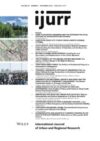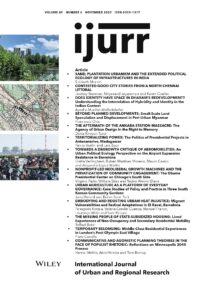This article explores a novel unstable form of middle-class place belonging as exemplified in London’s East Village—the former 2012 Olympics Athletes’ Village and the first neighbourhood developed at the Queen Elizabeth Olympic Park. I conceptualize this form as ‘temporary belonging’ and engage with Bourdieu’s underutilized insights, particularly housing corporations’ ability to impose their priorities on affluent homeseekers through their unconscious complicity. This approach illuminates questions of place-production within the context of fifth-wave gentrification, characterized by the complementary roles of finance and states in restructuring urban space. Drawing on interviews with a manager and residents, alongside documentary analysis, the study reveals that the East Village’s corporate landlord employs place-production and advertising strategies that prioritize the dispositions of middle-class individuals. However, this is primarily motivated by the neighbourhood’s value as a long-term investment. Middle-class residents describe East Village as a ‘unique’ place to live. Nonetheless, their narratives of belonging carry a distinct element of temporal limitation. They experience tensions between the neighbourhood’s appeal, their household circumstances and their long-term residential aspirations. ‘Temporary belonging’ thus encapsulates their response to the conditions and constraints they encounter in the neighbourhood field, as structured by the landlord.
Details
Written by:
Piero Corcillo
Digital Object Identifier (DOI)
https://doi.org/10.1111/1468-2427.13361
About DOI

